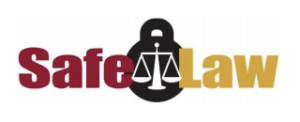Executive Summary
It’s important to begin a new client relationship the right way – but it’s just as important to end it properly. Tie up loose ends, especially fees and financial issues. Part as positively as possible. Recognize that some ethical duties – maintaining client confidences, for example – continue even after the file is closed.
Parting Should Be Sweet, Not Sorrowful
Client relationships end for many reasons: the client moves on, the relationship breaks down, the case wraps up. Regardless of the reason, you should have procedures in place for closing the file and bringing a formal conclusion to the relationship.
![]()
Alta Pro Practice Pointers
- Act professionally. Some engagements end sourly. The client may owe you money or have pending contractual obligations with you or your firm. Even so, you have a professional duty to protect their interests. Doing otherwise increases the odds that you will be sued for malpractice or reported to the State Bar.
- Know when you must withdraw. Under ABA Model Rule 1.16, you are required to end representation if (a) continuing as attorney would violate the Rules of Professional Conduct or other laws, (b) your mental or physical condition prevents you from doing your job, or (c) the client fires you. The rule also explains when you can voluntarily withdraw, and it sets out your professional obligations that flow from both mandatory and voluntary withdrawals.
- Don’t abandon clients. If the relationship ends before the case is resolved, do everything you reasonably can to protect the client’s ongoing interests. Don’t dump a client because of an argument or personal dispute. Bad behavior should not be reciprocated. Be a lawyer to the very end.
- Document any falling out. Describe what precipitated the dispute and explain your position. Express your willingness to continue to help the client. Don’t get drawn into a fight. This is a professional matter, not personal. Wait 24 hours before sending a difficult letter. A heated, emotional response might provoke a bar complaint or malpractice claim.
- Give the client their file. Check your bar rules on what material must be turned over. Keep a copy for yourself. Never hold the file hostage because of unpaid fees or personal reasons. Don’t charge an unreasonable expense for copying the file. Make sure you’ve documented your efforts to represent the client ably and ethically, including your advice on critical issues.
- Send a disengagement letter. This brackets your engagement and starts the clock running for liability/statute of limitations purposes. Not clarifying your disengagement could suggest that you’re still involved. Explain in the letter how the case ended, along with the steps and advice that led to that resolution. This protects you, and it helps the client understand what happened and what comes next.
- Have a File Retention Policy. Inform your client of your policy. Follow your state’s rules. Dispose of materials appropriately. Avoid careless exposure of confidential information. Learn more here.
- Scrub reusable work product of identifying information. Have you ever received a motion, pleading or brief that contained details from an unrelated case? It’s embarrassing, and it could prompt a malpractice claim.
- Enter closed file data in your conflicts database. Do this yourself or designate a staff member to do it.
The Bottom Line: How you end a client relationship could have serious consequences down the road. Be sure to do it the right way.
What’s Next?
Have a question about terminating a client relationship? Ask the Risk Pro!
Looking for pointers on arbitration clauses in engagement agreements? Click here!
Heads up!
This information is intended for informative purposes for members of Alta Pro Lawyers Risk Purchasing Group. It is not intended as legal advice. Lawyers should always refer to local and state rules and statutes for applicable standards and rules. These guidelines are designed to help lawyers avoid professional liability claims and are not intended for any other purpose. No legal or fiduciary relationship is intended to be created by receipt of this material.
















